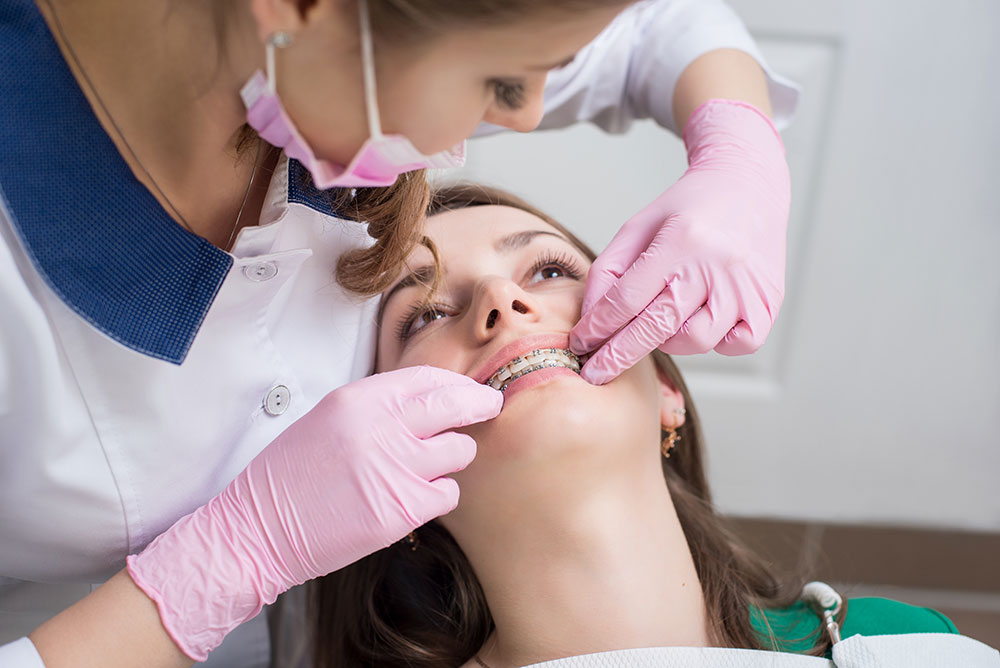Indicators on Legacy Orthodontics You Should Know
Indicators on Legacy Orthodontics You Should Know
Blog Article
The Main Principles Of Legacy Orthodontics
Table of Contents5 Easy Facts About Legacy Orthodontics ExplainedExamine This Report on Legacy OrthodonticsThe 10-Minute Rule for Legacy OrthodonticsThe Best Strategy To Use For Legacy OrthodonticsSome Of Legacy Orthodontics
In enhancement, we supply flexible treatment timetables, versatile repayment alternatives and an enjoyable, pleasurable experience.An orthodontist is a dental practitioner educated to identify, avoid, and deal with teeth and jaw irregularities. They fix existing problems and are trained to recognize troubles that may develop in the future. Orthodontists collaborate with individuals of every ages, from youngsters to adults. Individuals often link an ideal smile with healthiness.
Malocclusion, or misaligned teeth, can lead to oral concerns, consisting of dental cavity, periodontal illness, and hard or painful eating. Not everybody is birthed with straight teeth. If you have a poor bite or big areas between your teeth, you may wish to consult a dentist concentrating on orthodontic care.
Legacy Orthodontics - Questions
( Picture Credit: DigitalVision/Getty Images) Orthodontists utilize taken care of and detachable oral gadgets, like dental braces, retainers, and bands, to transform the position of teeth in your mouth. Orthodontic therapy is for dental problems, including: Jagged teethBite problems, like an overbite or an underbiteCrowded teeth or teeth that are also far apartJaw misalignmentThe goal of orthodontic therapy is to improve your bite.
A healthy and balanced bite ensures you can consume, chew, and talk correctly. While you might think about orthodontists as primarily for kids or teens who need braces, they can deal with dental troubles at any type of age. Orthodontists go to college, dental institution, and orthodontic college. After college graduation, they invest 2 or 3 years in an orthodontic residency program.
All orthodontists are dental practitioners, yet not all dentists are orthodontists. Orthodontic residency programs provide extensive, focused guideline for oral experts. They focus on 2 areas: Exactly how to properly and safely relocate teeth Just how to correctly assist growth in the teeth, jaw, and faceOnce an orthodontist has finished training, they have the option to end up being board accredited.
4 Easy Facts About Legacy Orthodontics Described
Imbalance, or malocclusion, is the most usual factor people see an orthodontist. It is genetic and is the outcome of size differences between the top and reduced jaw or between the jaw and teeth. Malocclusion results in tooth overcrowding, a misshapen jaw, or irregular bite patterns. Malocclusion is usually treated with: Your orthodontist affixes metal, ceramic, or plastic square bonds to your teeth.
If you have just small malocclusion, you may be able to make use of clear braces, called aligners, as opposed to standard dental braces (https://www.quora.com/profile/Brian-McCune-24). Some individuals need a her comment is here headwear to assist relocate teeth into line with pressure from outside the mouth. After braces or aligners, you'll need to put on a retainer. A retainer is a custom-made gadget that maintains your teeth in location.
They're most often made use of on youngsters. They can develop extra area in the mouth without having to draw teeth. If you have a major underbite or overbite, you might need orthognathic surgical procedure (also called orthodontic surgery) to extend or reduce your jaw. Orthodontists make use of wires, medical screws, or plates to sustain your jaw bone.
You may require to see an orthodontist if you have: Crowding or not enough room for every one of your teethOverbite, when your upper teeth come over your bottom teethUnderbite, when your bottom teeth are also far forwardSpacing or problems with gapsCrossbite, which is when your top teeth fit behind your bottom teeth when your mouth is closedOpen bite or an upright space between your front bottom and top teethMisplaced midline, when the center of your base and upper teeth do not line up Remedying an oral malocclusion can: Make attacking, chewing, and talking easierImprove the balance of our face and your general appearanceEase discomfort from temporomandibular joint problemsSeparate your teeth and make them less complicated to clean, aiding protect against dental cavity or tooth cavities It's typically a dental practitioner who first notifications misaligned teeth during a routine test.
The Ultimate Guide To Legacy Orthodontics

Throughout your initial orthodontic assessment, you'll likely have: An oral examPhotos taken of your face and smileDental X-raysPanoramic (360 degree) X-rays of your face and headImpressions to develop mold and mildews of your teethThese examinations will certainly assist your orthodontist understand exactly how to continue with your therapy. leesburg invisalign. An orthodontist is a dental practitioner that's had training to treat your teeth and jaw
Orthodontists might execute surgery, exams,X-rays,and even more to assist you obtain a much more comfortable, healthier smile. An orthodontist is concentrated on your bite, so something like a cracked tooth would be handled by a dental practitioner. Orthodontists are dental experts however not all dentists are orthodontists. Orthodontists are concentrated on your bite, or the means your teeth meshed, and the straightness of your teeth.
Ever before asked yourself just how celebs constantly seem to have perfectly straightened teeth? Orthodontists are dental experts who focus on remedying abnormalities in the teeth and jaws.
A Biased View of Legacy Orthodontics

, orthodontists have a diverse toolkit at their disposal. These tried-and-true braces make use of a system of brackets bound to the teeth and linked by cables.
Clear aligners, like Invisalign, are a popular option for patients seeking a much more discreet treatment choice. These detachable trays are customized to gradually move the teeth's placement. Headgear might be made use of combined with dental braces or aligners to use extra targeted pressures, especially for remedying jaw discrepancies. In cases of narrow jaws, palatal expanders can be used to create space for correct tooth positioning.
Report this page